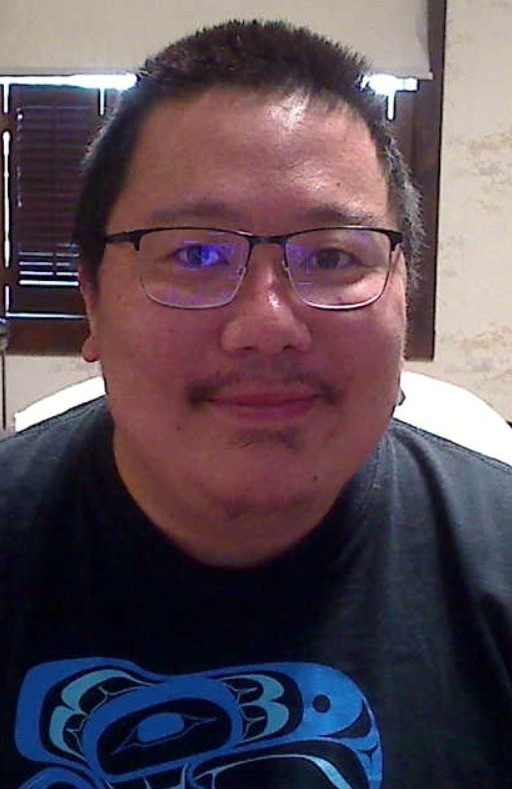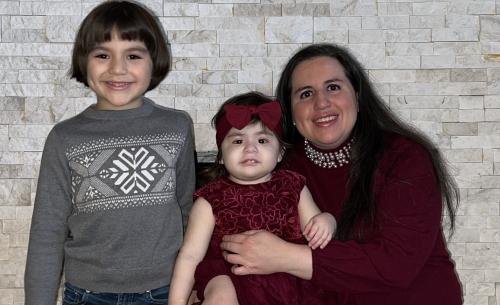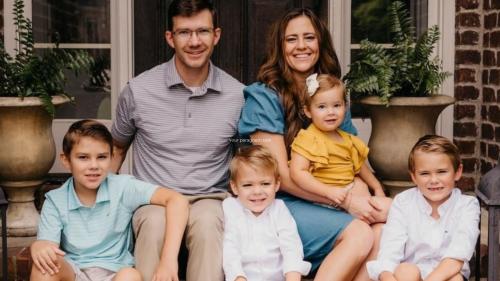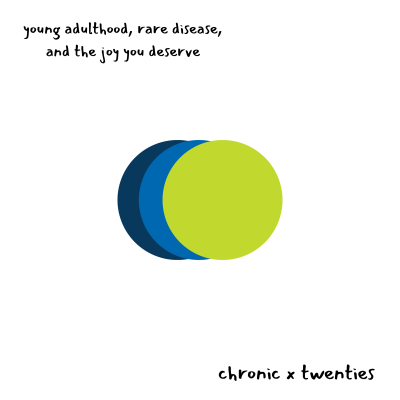
-
Understanding primary immunodeficiency (PI)

Understanding PI
The more you understand about primary immunodeficiency (PI), the better you can live with the disease or support others in your life with PI. Learn more about PI, including the various diagnoses and treatment options.
-
Living with PI
-
Addressing mental health
-
Explaining your diagnosis
- General care
- Get support
- For parents and guardians
-
Managing workplace issues
- Navigating insurance
-
Traveling safely

Living with PI
Living with primary immunodeficiency (PI) can be challenging, but you’re not alone—many people with PI lead full and active lives. With the right support and resources, you can, too.
-
Addressing mental health
-
Get involved

Get involved
Be a hero for those with PI. Change lives by promoting primary immunodeficiency (PI) awareness and taking action in your community through advocacy, donating, volunteering, or fundraising.
-
Advancing research and clinical care
-
Grants
-
IDF surveys
-
Participating in clinical trials
-
Diagnosing PI
-
Consulting immunologist
-
Clinician education

Advancing research and clinical care
Whether you’re a clinician, researcher, or an individual with primary immunodeficiency (PI), IDF has resources to help you advance the field. Get details on surveys, grants, and clinical trials.
-
Grants
Patrick Chew spent his childhood coping with infections and frequent hospitalizations. In his adult life, he developed additional complications in the form of autoimmune issues. All were caused by chronic granulomatous disease (CGD).
Prophylactic antibiotics and antifungals and injections of gamma interferon decreased the frequency of infection and allowed him to regularly attend school and join in other activities. But when he entered adulthood, Chew realized that using the drugs to continue treating his chronic illness would only result in further deterioration of his health.

In his late 20s, having endured autoimmune issues for over three years, Chew decided to seek a more curative treatment – bone marrow transplant (BMT), a procedure that would provide him with healthy stem cells from a donor so he could develop an immune system free of CGD. He recorded his transplant experiences in a journal that he hoped would provide others living with CGD insight into the process and help them make the choice that is best for their lives.
The following is an edited version of Chew’s journal.
The Decision
Chew met with his doctor at the National Institutes of Health (NIH) in Washington D.C. for an annual check-up in November 2016 and at the end of the appointment, the provider discussed bone marrow transplant or gene therapy, both in clinical trials for CGD, as more long-lasting treatment. When his doctor remarked that the procedure was more successful in younger people and that it might even resolve his autoimmune problems, Chew decided to enroll in the trials.
“I was offered a few papers to read over, told to think things over and get back to them. In my heart, however, I was ready to do this. I waited all of a week, mostly to talk things over with my family, before contacting my case manager. Once that email was sent, I breathed a sigh of relief. Could it be, after nearly 30 years of CGD and its complications, I would soon be free of it?” wrote Chew.
Preliminary Trips
In February and March 2017, Chew flew several times from his home in San Francisco to Washington D.C. to lay the plans and undergo procedures for his participation in the NIH clinical trials.
“I arrive feeling a bit dazed, I guess. It was weird thinking that at the same time next year I’d be cured of something that’s weighed me down my entire life. On the one hand, I really didn’t want to get my hopes up. There’s a reason that this is a study and not a guaranteed cure after all. There was even a small chance that I actually might die from complications. But the way I saw it is that if it doesn’t work, I would have gotten multiple trips to D.C. for free, lodging for free, and contributed to a study in hopes that some other unfortunate kid with CGD has a better chance later on,” concluded Chew.
During his time there, Chew met the first person, beyond his brother, he’d ever known with CGD. The man told Chew he knew lots of people with CGD, some very ill and some barely affected at all.
“I’m even more amazed by the doctors here because they have to deal with CGD manifesting in all sorts of different forms,” Chew remarked. “The data they’ve collected over the two-plus decades had to have been mind-blowing.”
Chew chose a tentative date for transplant, which was later changed.
“I learned that scheduling an exact transplant date is like grasping water. The date is contingent on so many factors – the donor availability, apheresis going right, others in the study (they don’t want too many undergoing this at the same time), available dates due to the insane duration, my schedule,” wrote Chew, who finally picked a date in May. “I'm sure that the day will arrive much sooner than I expect. The wait is actually worse than the idea of the transplant altogether.”
Transplant Preparation Begins
Chew arrived at the NIH on May 29, 2017, to begin the transplant process. The timing worked for both him and his donor, a 22-year-old woman.
Chew recorded a message of gratitude - “Wow! Thank you, complete stranger, for doing this.”
Before the transplant, Patrick received several tests - a bone marrow biopsy, an echocardiogram, and an ophthalmology appointment - to make sure his body could handle the transplant process, particularly more physically taxing procedures like chemotherapy and radiation, administered to suppress his immune system and make room in his body for the donor cells.
Chew met with the radiation team and discussed side effects, which ranged from hyperpigmentation of the skin, hair loss, and nausea, all immediately after the dose, to damage to lungs and kidneys, possible short-term memory loss, cataracts and blindness, and salivary glands malfunctioning, all occurring later in life. The conditioning could also be fatal.
“Anyways, I'm getting two doses of total body irradiation, lying down for both. The lead doc mentioned that the odds of me getting something seriously CGD-related was so much greater than my odds for radiation deadness that it was deemed an acceptable risk. I guess I deemed it that way too since I'm going to go through with it,” quipped Chew.
“Like I said at the start of this journey, whatever is going to happen will happen. All in, betting the farm, thumbing my nose at the house, whatever you call it. In one week, four days all the chemo and radiation will be done, and I'll be in possession of a brand-new immune system.”
Chemotherapy and Radiation
Chew received his chemotherapy with three infusions over three days, and day one proved the most difficult with side effects resembling those related to the flu such as high fever and chills.
“Like a switch had been flicked, my teeth began chattering, and my whole body began trembling. A cold and achy sensation swept over me that progressively intensified,” described Chew in his journal.
With pain medication, the side effects subsided, and by day five, he felt better. Busulfan, another chemotherapy medicine administered with a two-hour infusion, followed.
About two weeks after arriving at NIH and a few days after chemotherapy, Chew underwent two doses of total body irradiation to weaken his immune system further and allow the donor cells to take over. The radiation required lengthy periods of uncomfortable positioning but otherwise didn’t cause him pain. However, the cumulative effects could occur days, weeks, months, or years down the line.
Transplant Day
Doctors infused the stem cells for the transplant on June 16.
“And the transplant is done...kind of anti-climactic. It started around 12:30 p.m. and ended at 2 p.m. It was basically a bag of cells hung on my IV pole and gravity dripping the 400mL of the stuff into my body bit by bit. The color of the drip was like a thin tomato soup with tiny little sand-like granules inside. It was made less exciting by Benadryl, at least from my point of view. Other nurses and doctors and Mom seemed a lot more interested in the process than I was,” recalled Chew.
“Too bad I can't see what's happening at the molecular level. It would have been cool to see those billions of cells arriving in their new home, looking around, and trying to settle in. Don't feel any different yet. Time will tell.”
Conditioning Side Effects
In the following days, Chew experienced the after-effects of radiation and chemotherapy – namely severe headaches, gastric pain, and hair loss. And by June 22, Chew was officially immunosuppressed, with his neutrophils and white blood count at zero. Though his mother wanted to check on him, Chew told her not to visit because he felt so ill.
Continued pain medicine relieved his stomach discomfort, but he developed an infection that had to be treated with antibiotics.
“Got back to the room and was completely emotionally and mentally spent. Between the lack of sleep for nearly a week and a half and being in pain for the past few hours, I just broke down and had a good cry,” wrote Chew.
“At this point, I think both Crystal, the floor chaplain, and Martha, the case manager, stopped by while I was crying and offered words of support. This was probably the lowest point in my journey, but I most definitely will bounce back.”
Chew didn’t improve much over the following days, and his medical treatment regimen prevented continuous sleep. Between treatment for pain and checks on his vitals, nurses woke him up several times a night. His sleep deprivation overwhelmed him.
“Be sure that if your nights get as hectic as mine did, you ask the team to shift the dosage schedule to something less insane and to cluster medicines whenever possible,” advised Chew.
“I showed the rounding team my schedule of the night, and they were more than surprised, so check your timings and consult with your team to avoid misery.”
Engraftment
When July arrived, Chew described his experience as a “tough ride so far” because of severe gastric pain, but at the same time, he progressed into the engraftment stage of his treatment. His neutrophils showed improvement, and on July 7 (Day 20) he had 98 percent chimerism, meaning that the donor cells comprised most of his immune system after the transplant.
By July 10 (Day 24), doctors released Chew from the hospital and allowed him to stay at a nearby hotel where his mother helped care for him and accompanied him to appointments.
Chew visited the hospital every few days to have his blood tested - until July 17 when he developed an infection and had to be admitted back into the hospital.
“I had seven days of freedom spent grocery shopping, eating at restaurants of different cultures, having tasty home cooking, and meeting up with a cousin (a 15-year cancer survivor who is also familiar with NIH) who lives in the area. Then my body decided to violate the terms of parole,” wrote Chew, who was released from the hospital three days later after taking antibiotics.
Though Chew continued to require medicine for high blood pressure, low phosphorus levels, and poor liver enzyme function, that didn’t dampen his spirits.
“I'm almost halfway to a hundred myself. Can't wait,” wrote Chew on July 31 (Day 45).
But by August 7 (Day 48) Chew wondered if the transplant would resolve his ongoing health issues.
“Well, the stem-cell transplant hasn't taken care of my autoimmune stuff. Too bad. Even on the low dose of mycophenolate, my autoimmune stuff has just been getting worse. More frequent coughing, legs are pretty much permanently swollen, achy joints. Hopefully a little down the line my immune system will stabilize. Otherwise, it’s back to the daily injections of Kineret,” bemoaned Chew.
Another setback occurred on August 28 (Day 73) when Chew coughed up blood after days of struggling with a dry cough. Doctors admitted him back into the hospital and found lesions in the bronchial tubes leading to his lungs. After administering steroids, they sent him back to the hotel.
Going Home
Finally, on September 7 (Day 83) Chew had made such progress that doctors discussed sending him back to California.
“Well, got the news that I'll more than likely be going home in two weeks barring any unforeseen problems. That snuck up real quick and I was a little shocked,” remarked Chew.
The third week in September, doctors drew Chew’s 100-day labs (13 vials of blood) and performed a chest CT scan. Chew filled out his request for records form in preparation for departure.
“It's so very surreal to think this is my final week here in Maryland. For me, this entire process went by like a blur. It seemed like only yesterday I was arriving for workup week and settling into the fifth floor for something potentially life-threatening,” wrote Chew.
“I don't feel any sort of elation or relief really, as I know this entire thing is an ongoing process and my graft could potentially fail still. All I know is that another step is done, and another chapter in my life is close to being finished. It is somewhat nice to finally be heading home and be in my own bed again. I survived so far. We'll see what the future holds.”
The Present
Today, Chew, 34, is working in his tenth year as a paraprofessional for a school in San Francisco, and when he’s not assisting middle school students with their academics, he’s writing fanfiction, playing computer games, and going on long walks.
Five years after the transplant, Chew has avoided major illness and infection, and his autoimmune issues have resolved. Still, lung damage that occurred during childhood is causing strain on his heart, and long-term use of prednisone has led to challenges with his weight and bone density. Though he works every day, Chew relies on an oxygen concentrator to prevent stress on his lungs and heart.
His advice to others on their journey with CGD is to take one day at a time.
“Make the best out of every day and try to be as positive as you can. Don't stress about what you can't control. What will happen will happen and stressing won't change anything,” said Chew. “You can let CGD define who you are and how you interact with others, but it's up to you to decide how you want it to define you."
____________________________________________________________________________________________
Read more about the Chew family’s journey with two sons diagnosed with CGD.
Related resources
Sign up for updates from IDF
Receive news and helpful resources to your cell phone or inbox. You can change or cancel your subscription at any time.





The Immune Deficiency Foundation improves the diagnosis, treatment, and quality of life for every person affected by primary immunodeficiency.
We foster a community that is connected, engaged, and empowered through advocacy, education, and research.
Combined Charity Campaign | CFC# 66309




